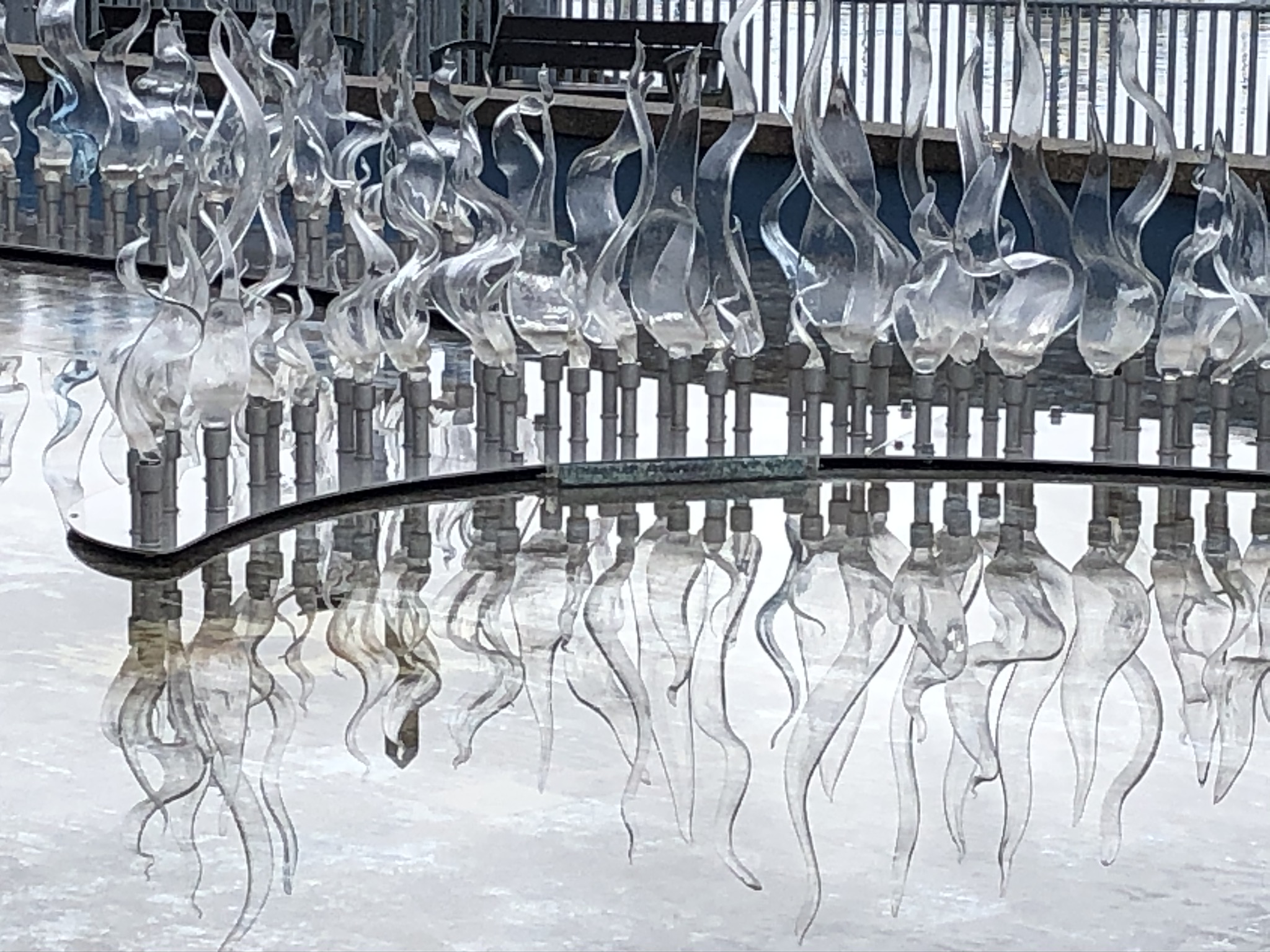On Sunday I walked in Tacoma, the second biggest city and urban area in the state of Washington. It has a large working port, created in 1918 on Commencement Bay, in South Puget Sound, known as the “Gateway to Alaska”.
It also has a beautiful museum dedicated to glass – Museum of Glass a.k.a. MOG – and the largest hot shop on the West Coast where you can sit and observe glassblowing in action.

I will report on the exhibit I had come to explore and write about later. Today I just want to share the photographs from the outside around the museum, and the bridge that connects it, across a highway, to downtown.



It was a moody day as far as the sky was concerned, which made for perfect light being reflected by the glass installation located outside in the museum’s courtyard. A bit of rain, a whisper of wind, and later the sun breaking through the clouds on this November morning.


The display was under renovation, which meant that the water that usually covers the steel columns holding up the glass had been drained from the basin.

The emerging peeling blue paint was the perfect foil for the glass. The few places where puddles covered the cement were terrific for reflection. The water was too low and shallow to be ruffled by the wind, so that it offered a still mirror surface.




I had not seen any of this before, it was my first visit to Tacoma. I assume there is a symmetry to the installation when the basins are filled that was absent on Sunday. But the sense of slight decay and roughness in the cement surface really enhanced the impression of pieces and shards and crumblings of glass, rather than the perfect flow perhaps intended.



It probably did not look like the vision of artist Martin Blank who conceived of this installation called Fluent Steps, but I was impressed – and I seemed to be the only one around on a Sunday morning at 11:30 (the museum opened at noon.) I could barely stop looking at all this shiny beauty, the rain softly glittering where it hit the surface. You can find a detailed description of the installation and the artistic process here.


*
The bridge of glass, free to walk for all, is located on the other side of the large architectural cone that airs the hot shop inside the museum and has a lattice pattern found in much of NW blown glass art. The bridge displays a large percentage of the Chihuly collection that it MOG’s hallmark, with a “Venetian Wall” that is an 80-foot-long installation housing 109 individual showcases. I am, truth be told, not a fan of his work, but walking along these many pieces, backlit by the light that was occasionally peeking through the rain clouds into the cubicles that housed them, was quite delightful.




What stopped me dead in my tracks, of course, was the gift of daily wildlife: a flock of starlings that fluttered about and made its home, on and off, telling by the masses of bird poop, on the top of the sculptural columns at the center of the bridge. The “Crystal Towers,” two 40-foot-tall structures on either edge look like gigantic pieces of turquoise rock candy. The towers are made from 63 pieces or “crystals” of Polyvitro, a polyurethane material known for its durability. The Polyvitro has a strange way with light, not quite reflective, not quite absorbing, altogether mysterious.




The starlings congregating on the various candy pieces, on the other hand, were as shiny as can be, their oily feathers insulating them against the Northwest rain and making them look like little dark pearls on the turquoise surfaces. Busy, chattering, fluttering pearls, I might add.




It was the perfect morning.
Music today, how can it not be: Glassworks by Philip Glass





